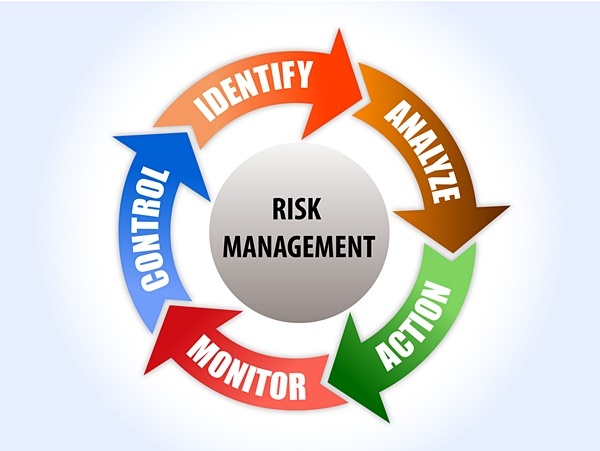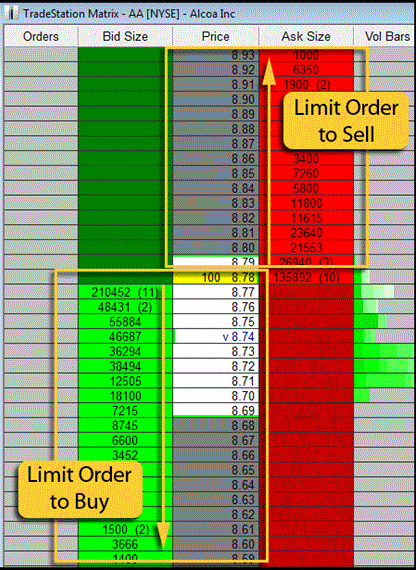Many people overlook the importance of managing risk in their positions and trades. As a trader or investor, this is the only thing that we can control. We cannot control the directions of the markets. We also cannot control whether we will win or lose in any position we take. The only thing within our control is the amount of loss we will suffer.
To most traders, risk management means simply setting stops. Many investors do not even do this to control risk. However, there is much more to managing your risk in the markets. You wouldn’t drive onto a bridge if you have noticed that most of the supports have crumbled would you? Would you walk onto a frozen lake after seeing a “Thin Ice” sign posted and several cracks showing in the ice itself? Of course you wouldn’t, that is because you observed the environment and realized that it was too risky to proceed.
We need to observe the same discipline when we are involved in the financial markets. To analyze risk before trading or investing, we must look at the current market environment, the security’s environment and the trend. Are we in a danger spot that would preclude us from taking a trade? Suppose the markets were bearish, your security has just released disappointing earnings and is near supply on your trading time frame. Would you buy shares just because prices moved up slightly? Most likely you wouldn’t. Even though you have a short term bullish move, the overwhelming bearishness of the markets tells you that the environment is risky and the reward isn’t large enough to endorse a long position.
Many people can plan a trade, but not all have the ability to analyze the risk and manage the risk in a manner that ensures their financial survival in the markets when things go wrong. And believe me, they will from time to time.
There are three main risk management techniques that I wish to discuss here:
Frequency
In trading and investing, frequency refers to the number of positions we will open. The issue with many traders/investors is that they will try to take all opportunities they see and open positions with only a marginal chance for success. They do this due to fear of missing opportunities and profits in the markets.
Successful traders/investors have the discipline to be more selective in their opening of positions and take only those trades that meet specific criteria outlined in their plan and that offer a high probability for profits. As a new trader/investor, you should limit the number of trades you take. This will force you to look for the right opportunities to trade rather than jumping in on any small move in the markets. Remember, even if you miss an opportunity, there is likely another one coming along very soon.
Duration
The second technique is duration, or the amount of time spent in the position. The longer you spend in a position, the greater the chance for adverse price movement. This is why investors take on much greater risk in the markets than traders do. When we focus on smaller time frame charts, we have less profit potential but also much less risk. Trading on smaller time frames reduces the risk we face in our trades.
This does not mean that we should not look to profit from longer time frame positions. You can compensate for the increased duration risk by reducing the other two factors of size and/or frequency. Longer term traders and investors can still manage risk well.
Duration may also need to be turned down when overall volatility in the markets rise. Rising volatility causes more drastic price swings. As a new trader who is unaccustomed to trading these swings, you are best served by reducing your exposure to them by trading in smaller time frames.
Volume
Volume is the most important aspect to your risk management plan. Volume for a trader/investor is the share size we are taking per position. Obviously, most people want to profit as much as possible, but by taking a larger share size, we are also increasing our risks. Volume should start as practice, in a simulated account, with no money at risk. After successfully practicing you may increase your risk with minimal shares. If you keep doing well, gradually increase your share size.
The keyword in the last sentence is gradually. Many traders feel they must go from 100 to 1000 shares, or 1000 to 10000 shares. This increases your risk ten times! You are much better off by no more than doubling your share size or risk for every step and only do so if you are achieving a positive win/loss ratio. When you risk more money in a position, there is a psychological effect that you will notice. Watching profits and losses increase exponentially can wreak havoc on a new trader’s psyche. This may cause you to panic and exit positions too soon or to hold onto losers as you become frozen with fear.
If you are not trading or investing well at any time, you should immediately examine your risk management. The first thing is to reduce your volume (share size). Secondly, be more selective in your positions and turn down the frequency. Lastly, you can also reduce the duration of trades to offset volatility.
Everyone has a different balance of these risk management tools that they should be using. The courses at Online Trading Academy teach you the proper risk management. Once you have completed them, you will work individually with your local center’s student support specialist as well as your educational counselor to find the right balance for your specific situation and trading plan. Until next time, may all your trades be green and your losses small!
Neither Freedom Management Partners nor any of its personnel are registered broker-dealers or investment advisers. I will mention that I consider certain securities or positions to be good candidates for the types of strategies we are discussing or illustrating. Because I consider the securities or positions appropriate to the discussion or for illustration purposes does not mean that I am telling you to trade the strategies or securities. Keep in mind that we are not providing you with recommendations or personalized advice about your trading activities. The information we are providing is not tailored to any individual. Any mention of a particular security is not a recommendation to buy, sell, or hold that or any other security or a suggestion that it is suitable for any specific person. Keep in mind that all trading involves a risk of loss, and this will always be the situation, regardless of whether we are discussing strategies that are intended to limit risk. Also, Freedom Management Partners’ personnel are not subject to trading restrictions. I and others at Freedom Management Partners could have a position in a security or initiate a position in a security at any time.
Editors’ Picks

EUR/USD climbs toward 1.1800 on broad USD weakness
EUR/USD gathers bullish momentum and advances toward 1.1800 in the second half of the day on Tuesday. The US Dollar weakens and helps the pair stretch higher after the employment report showed that Nonfarm Payrolls declined by 105,000 in October before rising by 64,000 in November.

GBP/USD climbs to fresh two-month high above 1.3400
GBP/USD gains traction in the American session and trades at its highest level since mid-October above 1.3430. The British Pound benefits from upbeat PMI data, while the US Dollar struggles to find demand following the mixed employment figures and weaker-than-forecast PMI prints, allowing the pair to march north.

Gold recovers above $4,300 as markets react to weak US data
Gold trades in positive above $4,300 after spending the first half of the day under bearish pressure. XAU/USD capitalizes on renewed USD weakness after the jobs report showed that the Unemployment Rate climbed to 4.6% in November and the PMI data revealed a loss of growth momentum in the private sector in December.

US Retail Sales virtually unchanged at $732.6 billion in October
Retail Sales in the United States were virtually unchanged at $732.6 billion in October, the US Census Bureau reported on Tuesday. This print followed the 0.1% increase (revised from 0.3%) recorded in September and came in below the market expectation of +0.1%.

Ukraine-Russia in the spotlight once again
Since the start of the week, gold’s price has moved lower, but has yet to erase the gains made last week. In today’s report we intend to focus on the newest round of peace talks between Russia and Ukraine, whilst noting the release of the US Employment data later on day and end our report with an update in regards to the tensions brewing in Venezuela.
RECOMMENDED LESSONS
Making money in forex is easy if you know how the bankers trade!
I’m often mystified in my educational forex articles why so many traders struggle to make consistent money out of forex trading. The answer has more to do with what they don’t know than what they do know. After working in investment banks for 20 years many of which were as a Chief trader its second knowledge how to extract cash out of the market.
5 Forex News Events You Need To Know
In the fast moving world of currency markets where huge moves can seemingly come from nowhere, it is extremely important for new traders to learn about the various economic indicators and forex news events and releases that shape the markets. Indeed, quickly getting a handle on which data to look out for, what it means, and how to trade it can see new traders quickly become far more profitable and sets up the road to long term success.
Top 10 Chart Patterns Every Trader Should Know
Chart patterns are one of the most effective trading tools for a trader. They are pure price-action, and form on the basis of underlying buying and selling pressure. Chart patterns have a proven track-record, and traders use them to identify continuation or reversal signals, to open positions and identify price targets.
7 Ways to Avoid Forex Scams
The forex industry is recently seeing more and more scams. Here are 7 ways to avoid losing your money in such scams: Forex scams are becoming frequent. Michael Greenberg reports on luxurious expenses, including a submarine bought from the money taken from forex traders. Here’s another report of a forex fraud. So, how can we avoid falling in such forex scams?
What Are the 10 Fatal Mistakes Traders Make
Trading is exciting. Trading is hard. Trading is extremely hard. Some say that it takes more than 10,000 hours to master. Others believe that trading is the way to quick riches. They might be both wrong. What is important to know that no matter how experienced you are, mistakes will be part of the trading process.
The challenge: Timing the market and trader psychology
Successful trading often comes down to timing – entering and exiting trades at the right moments. Yet timing the market is notoriously difficult, largely because human psychology can derail even the best plans. Two powerful emotions in particular – fear and greed – tend to drive trading decisions off course.




